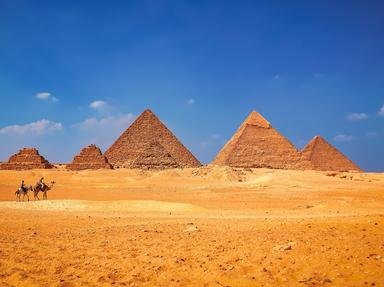Quiz Answer Key and Fun Facts
1. On certain days acording to the calender of lucky and unlucky days some foods were prohibited. What food was more frequently prohibited than others?
2. In about 1000BC 56 dead kings and queens were moved to safer places, away from tomb raiders. Where were the first 40 found by archaeologists?
3. There was a judgement ceremony held to see if the king would be granted a place in the afterlife. What was it called?
4. From the Late Period (747 BC) pilgrims to certain temples were able to purchase what to offer to the gods?
5. Which of these was not a King in the Fifth Dynasty?
6. How many names was the king given at his coronation?
7. How much did the innermost coffin of Tutankhamun weigh?
8. What was used to solidify the outer wrapping of Tutankhamun's mummy?
9. How many children did Tutankhamun father?
10. What was the first object found in the antechamber of Tutankhamun's tomb?
Source: Author
iset
This quiz was reviewed by FunTrivia editor
bloomsby before going online.
Any errors found in FunTrivia content are routinely corrected through our feedback system.


